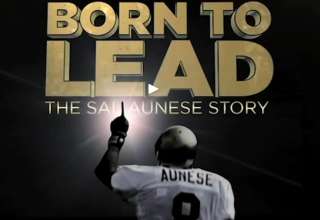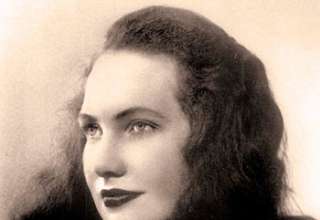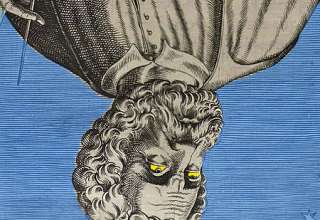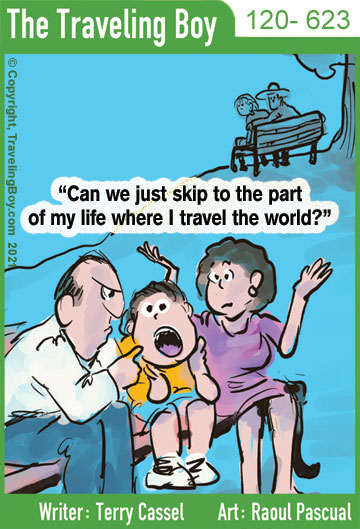
Take a flying tour of ancient Rome, recreated digitally in spectacular detail
by J-P Mauro for Aleteia.org
There have been some beautiful digital recreations of ancient Roman sites, but the work being done by History in 3D goes above and beyond. At the tail end of 2021, they released this 8-minute aerial tour of their work so far. The project is far from complete, but it promises a unique and accurate view of ancient Rome. This is Rome as it would have looked during the time of Christ.
The majority of this ambitious digital recreation is the product of just two 3D modelers: Danila Loginov and Sergey Bardyshev. On their website, they note that Danila founded the project in 2011, for which he serves as team leader and modeler. The team’s goal is to create the most complete, accurate and detailed 3D reconstruction of ancient Rome.
Full articleFrance Joli – The Voice of Montreal
In 1979, sixteen-year-old France Joli burst onto the international music scene with the Disco-Era classic Come To Me. More hits followed: The Heart To Break The Heart, Gonna Get Over You, and, more recently, France’s cover of the Leonard Cohen favorite Hallelujah.
Ms. Joli is back with a new song. It’s a cover of the ballad Heart of Stone from the hit Broadway musical SIX (about the wives of Henry VIII). Joli puts her trademark disco spin on the track along with soaring vocals that rival the stage version.
In a revealing new interview with filmmaker/discophile Kelly Hughes, the celebrated chanteuse Québécoise talks about the making of Heart of Stone and shares behind-the-scenes stories about her most beloved songs.
Pandemics Do Eventually End
Even if Omicron is complicating the question of when this one will, it won’t be like flipping a light switch: The world will have to learn to coexist with a virus that’s not going away.
Pandemics do eventually end, even if omicron is complicating the question of when this one will. But it won’t be like flipping a light switch: The world will have to learn to coexist with a virus that’s not going away.
The ultra-contagious omicron mutant is pushing cases to all-time highs and causing chaos as an exhausted world struggles, again, to stem the spread. But this time, we’re not starting from scratch.
Vaccines offer strong protection from serious illness, even if they don’t always prevent a mild infection. Omicron doesn’t appear to be as deadly as some earlier variants. And those who survive it will have some refreshed protection against other forms of the virus that still are circulating — and maybe the next mutant to emerge, too.
The newest variant is a warning about what will continue to happen “unless we really get serious about the endgame,” said Dr. Albert Ko, an infectious disease specialist at the Yale School of Public Health.
“Certainly COVID will be with us forever,” Ko added. “We’re never going to be able to eradicate or eliminate COVID, so we have to identify our goals.”
At some point, the World Health Organization will determine when enough countries have tamped down their COVID-19 cases sufficiently — or at least, hospitalizations and deaths — to declare the pandemic officially over. Exactly what that threshold will be isn’t clear.
Read Full Story
Where Does the Name January Come From?

January is named for the ancient Roman god of transitions, Janus, who is often depicted with two heads that face in opposite directions.
St Canute’s Day

St Canute’s Day is the feast day of the Danish king Canute the Holy, which was originally on January 7, the day after Epiphany.
National Park Fee-Free Days of 2022
By Elizabeth Preske of TripSavvy

Outdoor enthusiasts, get ready to start planning your 2022 adventures. For five days this year, the National Park Service will waive entrance fees for all 423 of its parks, monuments, and memorials.
Even though you can visit a majority of the national parks for free at any given time, 108 NPS sites—including Acadia, Grand Canyon, Yosemite, Yellowstone, and Glacier national parks—charge admission fees ranging from $5 to $35 most days of the year. But if you plan accordingly, you can hit up America’s most popular parks without worrying about this key cost.
The National Park Service fee-free days for 2022 include:
- Jan. 17 – Martin Luther King, Jr. Day
- April 16 – First day of National Park Week
- Aug. 4 – Great American Outdoors Act anniversary
- Sept. 24 – National Public Lands Day
- Nov. 11 – Veterans Day
We Must Come Together on COVID

The new Netflix film Don’t Look Up is a star-studded allegory about climate change. The world faces a clear and imminent threat, and the question the movie poses is: Will we be able to overcome the narrow self-interests of politicians, the business community, and individual nations to defeat the threat we collectively face? Will too many people around the world be too gullible and passive to demand the right actions from their leaders?
In the case of the film, it does not give away too much to suggest that doing the right thing is a challenge. The film is not just a parable about our inertia when it comes to the ever worsening, nearly irreversible climate crisis—it is a reminder that the idea that the planet will effectively unite in the interest of self-preservation is itself a romantic myth.
The coronavirus pandemic has shown that bona fide global cooperation is more fanciful and out of reach than ever.
It was a very different sort of Hollywood product, President Ronald Reagan, who—with Soviet Premier Mikhail Gorbachev—helped promote this fantasy of an enlightened global community. During a 1985 summit in Geneva, their conversation took an odd turn. As reported by Gorbachev himself, “President Reagan suddenly said to me, ‘What would you do if the United States were suddenly attacked by someone from outer space? Would you help us?’” Gorbachev responded, “No doubt about it.” Reagan replied, “We too.”
Our modern experience with shared existential threats tells another story.
Read Full StoryRamen for Winter

The roots of ramen can be traced back to China, whose noodle-eating food culture was introduced in Japan during the 1860s. It was at this period when Japan ended its national isolation and reopened its ports to the outside world.
30 Best Ramen RecipesFree Jabs and Sauna at Austria’s Fun Palast brothel

Forget free beers, lotteries and discount food, a brothel in Austria has come up with a sure-fire way to incentivise people to get the coronavirus vaccine. Not only is Fun Palast in Vienna administering jabs, it’s offering up a 30-minute session in the ‘sauna club’ with the ‘lady of your choice’ to anyone who gets the vaccine at the on-site clinic.
READ FULL STORYLarry David on Larry David
Larry David to host ‘Saturday Night Live’ (blastingnews.com)
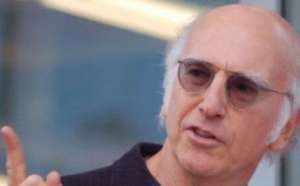
There are many things about me that I’m sure might be of interest to readers. Things I’ve never really told anyone. I’ve always been a private person, but I wanted to make sure I got a few things down in writing, just in case anything happens to me-or before I forget!
MORE about Larry DavidLike, here’s something: People might be surprised to learn that I’m a speed reader. I took a course when I was a kid, and one would be hard pressed to name a book I haven’t read. Books are my constant companions. Like, last year, I went to Turks and Caicos over Christmas and read “The Count of Monte Cristo” on the way there and “Anna Karenina” on the way back. I’m glad I read them in that order. It might have ruined my vacation otherwise! So, you know, stuff like that.
Not sure how much time should be given to my standup years, but I’ve thought of a few stories that might be worth mentioning. There was one night at the Improv when I made a woman sitting in the front row laugh so hard that she went into convulsions and eventually lost consciousness. An ambulance had to be called, and she was taken to Roosevelt Hospital. It was touch and go there for a while, but thankfully she pulled through. I visited her the next day with the best bouquet of flowers that New York had to offer and humbly stood by while she told the nurse how “damn funny” I was. Pretty embarrassing, but what choice did I have?
From that point on, everyone started calling me Killer. People came to the club in droves, asking if Killer was going on. It wasn’t bad for my social life, either. No sooner would I finish a set than there would be half a dozen women at the bar, trying to talk to me. “Kill me! Kill me!” they would pant. I would choose two and off we’d go. One particular night, the husbands showed up. (I had no idea they were married-swear to God!) Fortunately, my father taught me how to box when I was a kid, and there’s no doubt I could’ve turned professional if comedy hadn’t called me. In any case, I was not to be trifled with. I calmly explained this to both husbands, but they were not impressed. Two minutes later, they were lying flat out on the sidewalk, whereupon their wives and I hopped into a cab and I did another set across town. When it was over, I bought a round of drinks for everyone, even though I didn’t have a penny to my name. (Interesting stuff, right? Hope it’s useful. Either way, I’m good-your call.)
There wasn’t much money to be made in standup back then, so I supported my fledgling comedy career by working as a tour guide at the Central Park Zoo during the day. I’ve always had a deep connection with animals and I thought that would be the perfect job for me.
And it was, until some kid was admiring the polar bear and decided to jump the railing to get a closer look. I was in the middle of giving a tour when I heard screams coming from the kid’s parents and raced over there. The boy was on the ground in a state of shock, as the polar bear hovered over him, about to attack. As luck would have it, a few months prior I’d attended a lecture at the New School by one of the world’s foremost Ursus authorities, Dr. Meyer Dusenberry, who explained that if we were ever face to face with a bear we should create a cacophony. Without a second to lose, I grabbed the lid of a hot-dog pot from a nearby Sabrett’s cart, leaped over the fence, and frantically rattled the lid against the bars until the bear retreated. Then I slung the kid over my shoulder in a fireman’s carry (learned from my years as a volunteer with the F.D.N.Y.) and returned the youngster to his grateful parents. They offered me a huge reward, but I declined, saying that my reward was seeing their happy faces. No amount of money in the world could top that!
I kept in touch with the boy throughout his youth, and, after his parents lost all their money in a Ponzi scheme, I put him through college and medical school. Today, he’s on the verge of a monumental cancer-research breakthrough and is slated to appear on an upcoming cover of Time. I told him I preferred to remain anonymous in the article. (You don’t have to include this in the book, but, if you want to, I guess there’s nothing I can do about it.)
People always ask me what I would’ve done had I not become a comedian. Besides the aforementioned stints at prizefighting and animal husbandry, I was also a child prodigy at the piano. By the time I was eight, I was playing Beethoven’s “Hammerklavier” Sonata No. 29 in B-Flat Major flawlessly. There’s no telling how far I could’ve gone, but my budding career as a virtuoso ended when my “friend” Frenchie dropped a bowling ball on my foot. It broke my third and fifth metatarsal bones. I lost all proficiency with the pedals, and my tone was never the same. As I look back on that incident, what’s most galling to me is that I was only two strikes away from a perfect game when the “accident” occurred. Many years later, I ran into Frenchie at Yankee Stadium and accidentally dropped a fist in his face.
But the universe works in mysterious ways, because the day after my bowling-lane encounter with Frenchie I attended a podiatry convention (by then I’d become obsessed with the intricate bone structure of the human foot), where I met a doctor who told me that the simple act of running might be the best thing for my injury. Soon I was pounding the pavement nearly thirty miles a week, and, before long, not only was I playing the piano again but I had signed up for the New York City Marathon. It was my first race, but clearly I had a gift for distance running, because, after eighteen miles, I found myself in fifth place, only an eighth of a mile behind the leader.
We were approaching the Queensboro Bridge when, for some reason, I turned to my right and, behind the crowd, I noticed a holdup of a jewelry store in progress. Even though I was in striking distance of the leader, I couldn’t ignore what was taking place. I made a sharp detour to my right and slithered through the crowd. When I arrived at the store, the robber was brandishing a gun at the terrified jeweller while emptying the contents of the case into a cloth sack. I proceeded to sneak up behind the thief, karate-chop his arm, and render him unconscious with a sleeper hold that I picked up from watching Chief Jay Strongbow in a wrestling match on TV. Then I handed the gun to the jeweller, told him to call the police, and added that, if the robber were to wake up, he should shoot him if he made a move. Mission accomplished, I made my way back to the race and still managed to finish twentieth. There was no doubt in anyone’s mind that, had I not foiled the robbery, I would’ve easily placed in the top five, or maybe even won. (Life’s funny. Bought a new watch today and was reminded of that story for the first time in years. Can’t think of any reason that you wouldn’t use it, unless you don’t want people to know the truth. News flash! There’s more to me than just jokes!)
I entered the marathon again the following year and thought for sure that this time I’d sweep the chips, but two days before the race I was contacted by an adoption agency. There was a child available in Romania, and she was mine if I could get there in twenty-four hours. As badly as I wanted to win the marathon, I couldn’t pass up this amazing opportunity. For years, I’d longed to adopt a child. I had so much to give, so much knowledge to impart. That night, I was off to Romania. When I returned home, it was with a beautiful, sightless little girl named Natasha, whom I renamed Jill. She was six years old and didn’t speak a word of English, but, given my proficiency with languages, I was fluent in Romanian within five weeks. Tragically, after a few months, Jill’s birth mother showed up and begged to take her child back. How could I deprive a mother of her little girl? And so, as difficult as it was, I gave Jill up. I still write to her every day in Braille and make the trek to Bucharest annually. She’s the love of my life.
So, these are just a few memories-yours to use as you see fit. Just know that there’s certainly a lot more where they came from!
Lawrence Gene David (born July 2, 1947) is an American comedian, writer, actor, director, and television producer. He and Jerry Seinfeld created the television series Seinfeld, on which David was head writer and executive producer for the first seven seasons. He gained further recognition for the HBO series Curb Your Enthusiasm, which he created and stars in as a semi-fictionalized version of himself. He has written or co-written the stories of every episode of the improvisational comedy Curb Your Enthusiasm since its pilot episode in 1999.
It’s Winter, Wear a Hat

Story courtesy of bernardhats.com/all-about-hats/history-of-hats
The History of Hats begins with one of the first pictorial depictions of a hat appears in a Thebes tomb painting which shows a man wearing a conical straw hat.
MORE about History of Hats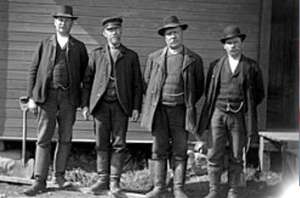
Other early hats were the Pileus, a simple skull cap; the Phrygian cap, worn by freed slaves in Greece and Rome; and the Greek petasos, the first known hat with a brim. Women wore veils, kerchiefs, hoods, caps and wimples. St. Clement, the patron saint of felt hatmakers, is said to have discovered wool felt when he filled his sandals with flax fibers to protect his feet.
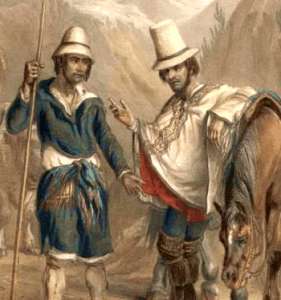
In the Middle Ages, hats were a marker of social status and used to single out certain groups. The 1215 Fourth Council of the Lateran required that all Jews identify themselves by wearing the Judenhat (“Jewish hat”), marking them as targets for anti-Semitism. The hats were usually yellow, and were either pointed or square.
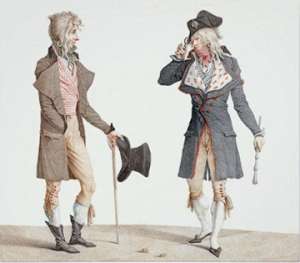
In the Middle Ages, hats for women ranged from simple scarves to elaborate hennin, and denoted social status. Structured hats for women similar to those of male courtiers began to be worn in the late 16th century. The term ‘milliner’ comes from the Italian city of Milan, where the best quality hats were made in the 18th century. Millinery was traditionally a woman’s occupation, with the milliner not only creating hats and bonnets but also choosing lace, trimmings and accessories to complete an outfit.
Men’s hat, 1600-1625
In the first half of the 19th century, women wore bonnets that gradually became larger, decorated with ribbons, flowers, feathers, and gauze trims. By the end of the century, many other styles were introduced, among them hats with wide brims and flat crowns, the flower pot and the toque. By the middle of the 1920s, when women began to cut their hair short, they chose hats that hugged the head like a helmet.

The tradition of wearing hats to horse racing events began at the Royal Ascot in Britain, which maintains a strict dress code. All guests in the Royal Enclosure must wear hats. This tradition was adopted at other horse racing events, such as the Kentucky Derby in the United States.
Extravagant hats were popular in the 1980s, and in the early 21st century, flamboyant hats made a comeback, with a new wave of competitive young milliners designing creations that include turban caps, trompe-l’oeil-effect felt hats and tall headpieces made of human hair. Some new hat collections have been described as “wearable sculpture.” Many pop stars, among them Lady Gaga, have commissioned hats as publicity stunts.
Random Acts of Canine Kindness

Cedric the Dog takes a well-deserved break after dismantling a domestic terrorist bomb at Pike Place Market.
You want a friend in Washington? Get a dog. – Harry S. Truman
Dog QuotationsTogether in Spirit – The Best Friends Animal Society
At the core of Best Friends Animal Society’s work is the dream that one day animals will no longer be killed in America’s shelters.
MOREMovie of the Week
Bringing Up Baby (1938). Directed by Howard Hawks.
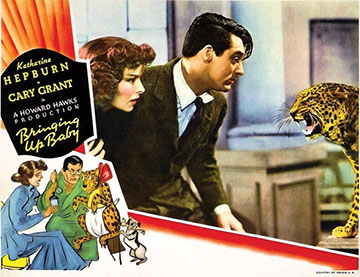
While trying to secure a $1 million donation for his museum, a befuddled paleontologist is pursued by a flighty and often irritating heiress and her pet leopard, Baby.
Booster Reminder

If you want to be proactive, go and get your vaccine, go get your booster, try to work to get the population immunity up to a higher level as Omicron becomes a variant here in the U.S.
MOREHow COVID-19 harms the heart

A colored chest x-ray of the enlarged heart of a 74-year-old female COVID-19 patient. Some patients continue to experience cardiovascular symptoms months after recovering from COVID-19-even though their chest scans and other tests come back normal.
Many patients are experiencing heart palpitations, chest pain, and shortness of breath even after recovering from COVID-19. But new studies offer reason for hope.
READ MORESpringsteen’s Relationship With His Father

Bruce Springsteen endured verbal abuse from his father as a child that later resulted in breakdowns and mental health issues, the singer revealed in an explosive tell-all interview.
Springsteen, 69, admitted that his father made him feel ashamed for being more like his mother, as opposed to tough like him.
“My mother was kind and compassionate and very considerate of others’ feelings,” he told Esquire. “She trod through the world with purpose, but softly, lightly. All those were the things that aligned with my own spirit. That was who I was. They came naturally to me. My father looked at all those things as weaknesses. He was very dismissive of primarily who I was. And that sends you off on a lifelong quest to sort through that.”
Today, Springsteen has dedicated his life to over 29 charitable foundations, often through his music and concerts.
MOREBen Franklin Quote

In 1736 I lost one of my sons, a fine boy of four years old, by the small-pox, taken in the common way. I long regretted bitterly, and still regret that I had not given it to him byinoculation. This I mention for the sake of parents who omit that operation, on the supposition that they should never forgive themselves if a child died under it; my example showing that the regret may be the same either way, and that, therefore, the safer should be chosen.
― Benjamin Franklin
What Are YOUR Holiday Cancellation Rights?
Courtesy of Matt Fernell, www.money.co.uk

If you need to cancel your holiday it is important to know where you stand before you speak to your travel agent or insurer. Here are your rights when you have to cancel your holiday.
No one wants to have to cancel their holiday but if this happens to you, you need to know what your rights are when it comes to getting your money back. Our guide explains it all.
The T-Boy Society of Film & Music’s Top Five North-American-English Language Travel Novels
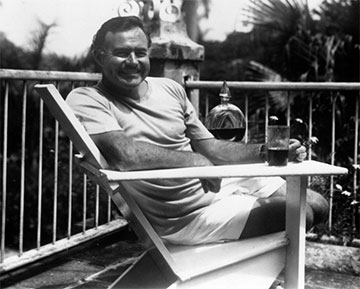
As can be expected the presence of Ernest Hemingway and Jack Kerouac dominated the lists. Regarded by many as the greatest and most influential writer in the 20th century, Hemingway’s writing style is minimalistic, direct, and unadorned, a result of his early newspaper training. While Kerouac termed his style of writing, “spontaneous prose,” which gushed with unedited sentences that captured the truth of the moment. Both writers’ work is based on personal experience. John Dos Passos, a Hemingway contemporary, and Mark Twain, whose novel, The Adventures of Huckeberry Finne, is considered by many as the Great American novel, are also well represented.
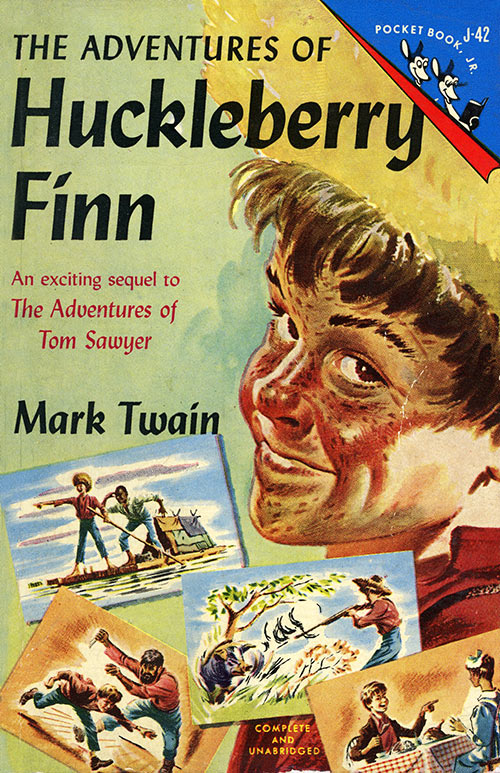
Rainer Werner Fassbinder

Rainer Werner Fassbinder (1945-1983) was a prolific German filmmaker, actor, playwright, theatre director, composer, editor, and essayist. Along with Werner Herzog and Wim Wenders (while some consider also Volker Schlöndorff), he is widely regarded as one of the prominent figures of the New German Cinema movement.
MORE about FassbinderFassbinder died at age 37 from a lethal cocktail of cocaine and barbiturates. His career lasted less than two decades, but still completed over 40 feature films, two television series, three short films, four video productions, and 24 plays. The T-Boy Society of Film & Music rates The Merchant of Four Seasons (1972), The Bitter Tears of Petra von Kant (1972), Ali: Fear Eats the Soul (1974), Fox and His Friends (1975) and Lola (1981) among his best films.
Running more than 13 hours, with a two-hour coda (released in the U.S. as a 15-hour feat ure), his landmark German TV Mini Series, Berlin Alexanderplatz (1980), an adaptation of Alfred Döblin’s 1929 novel Berlin Alexanderplatz, was the culmination of the director’s inter-related themes of love, life, and power. New York film critic, Vincent Canby hailed Fassbinder as “The most original talent since Jean-Luc Godard.”
FOCUS: Ali: Fear Eats the Soul (1974) by Rainer Werner Fassbinder
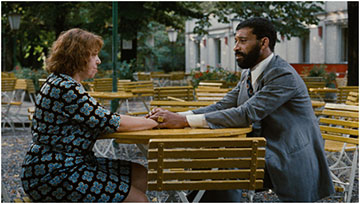
Produced at the peak of Rainer Werner Fassbinder’s creative powers, Ali: Fear Eats the Soul (1974)) reworks the narrative and thematic framework of Douglas Sirk’s classic melodrama All That Heaven Allows (also the inspiration for Todd Haynes’ Far from Heaven) in telling the improbable love story of Ali (El Hedi ben Salem), a thirty-something Moroccan immigrant working as a mechanic, and Emmi (Fassbinder muse Brigitte Mira), a German widow who is old enough to be his mother. The unlikely pair gets married and quickly encounters prejudice and discrimination from neighbors, friends, and family (including Fassbinder himself as Emmi’s son-in-law). This tender romance-cum-social-commentary has endured as one of Fassbinder’s most accomplished masterpieces..
Covid-19 Variant Omicron Induces Wave of Travel Restrictions
By Elizabeth West / Business Travel News
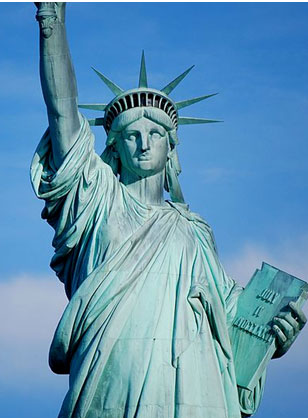
Effective today, United States has barred all foreign nationals arriving from South Africa, Botswana, Zimbabwe, Namibia, Lesotho, Eswatini, Mozambique and Malawi.
Urban air mobility may soon replace taxis, rideshares
By Gautham Nagesh

Within a few years, the most efficient way to get to the airport may not be a taxi or rideshare service, but an electric vertical takeoff and landing aircraft that can quickly get you to your destination for about the same cost as a ride in an Uber Black. Urban air mobility flights may cost as little as $50 to $80 and would typically carry between two and 10 passengers on short distances up to 200 miles.
It is late afternoon in Manhattan and you have a flight to catch at Kennedy International Airport. Instead of sitting in rush-hour traffic for two hours, you take a short ride to a nearby parking garage where you board an electric aircraft that takes off vertically from the roof and deposits you at Kennedy 20 minutes later for roughly the same cost as a fancy ride-share. You make your flight in time.
While this scenario might sound far-fetched, several companies say they are on the verge of being able to offer safe, cheap, clean electric aircraft that can help passengers travel distances between two and 150 miles without the need for a conventional runway. Public and private experts believe the technology could grow into a massive market that helps ease congestion and changes the way people travel in major metropolitan areas.
READ MOREThe Best Cities to Relocate to Around the World
The pandemic has heightened our appreciation for where we live, with many reconsidering their hometowns. Coupled with the flexibility of remote work and international borders slowly opening up, now might be the time to consider that relocation you’ve long dreamed of.
To determine the ideal places to call home, U.K. finance site money.co.uk studied the best cities to move around the world in its Relocation Report, released this week.
READ MOREImportance of Listening

Sounds are omnipresent in nature and many species’ lives depend on their acute hearing. What if as human beings we could learn this lesson from nature? In her latest blog, Dr. Kathy Allen offers 4 key reasons why we need to listen to what is happening around us.
Listen here: Kathleen Allen | The Sounds of NatureWorld’s Worst Airlines in the World

Travel company AirHelp, which helps travelers get compensated for flight delays, wanted to find out how dozens of airlines around the world stacked up against each other, so they crunched some numbers to create a ranking. The final list accounts for the quality of amenities, on-time arrivals and how well the airlines resolve flight-delay compensation claims.
READ MORESwitzerland by train, bus and boat

Receive detailed information about travelling by train, bus and boat –
all on mystsnet.com, Swiss Travel System’s Media and Trade platform. Keep
abreast of current information around the news world thanks to press releases
and download inspiring texts, pictures and videos from the Download Centre.

